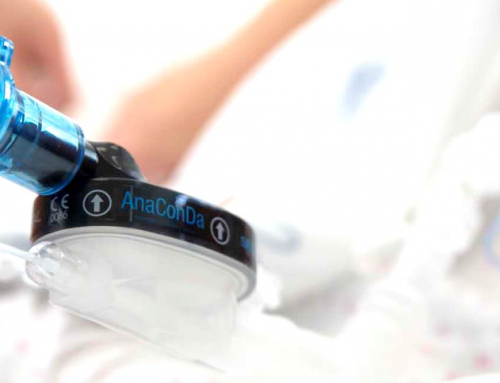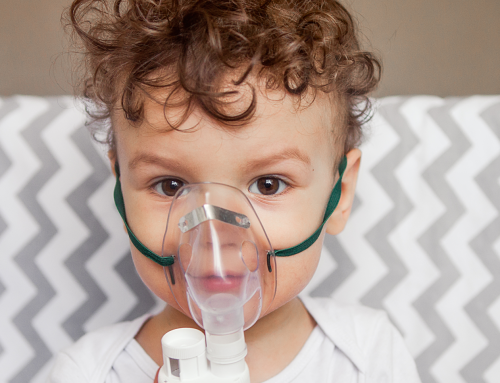
Jessica Morris, BSc SRT Conestoga College
The use of cuffed endotracheal tubes (CETTs) in children and infants is non-traditional, however, recent research and training techniques have demonstrated that the benefits of using a CETT tube could outweigh the negatives. Endotracheal intubation is a common technique performed to assist with the critical care of children by protecting their airways, providing positive pressure ventilation, maintaining oxygenation and much more (Bhardwaj, 2013). Uncuffed endotracheal tubes (UETTs) have been the most common choice for the past 50 years for intubation in children under the age of 8 years old. This is because the pediatric larynx is already so small, there is concern that a CETT will cause injury to the airway, causing subglottic stenosis (Wettstein et al., 2020). However, the trend of using CETTs in children and infants has become increasing popular, despite the controversy over the safety of use on such small and fragile airways (Shi et al., 2015).
Traditional Uncuffed Endotracheal Tubes
The traditional method of using a UETT leads to a number of faults, including but not limited to: unreliable carbon dioxide monitoring; wasting of materials; increased cost of inhaled anesthetics; increased pollution to the environment; increased risk of aspiration; and higher chance of unplanned extubation (UE) (Shi et al., 2015). One particular flaw of an UETT is a tendency for air leaks to occur due to either the tube diameter being too small or the tube moving within the airway. UETTs have been traditionally secured with tape, but there are now new methods of securing the tube, and using cuffs to prevent the loosening and/or movement of the tube has been explored (Rafidi, 2020).
Up and Coming Cuffed Endotracheal Tubes
CETTs have now been designed to overcome the issues previously caused by the original design, such as airway mucosal injury. In order for a CETT to be used on a pediatric or neonatal patient, there needs to first be close attention to detail when preparing it for use, including proper sizing, cautious length adjustment and most importantly, appropriate cuff inflation pressure (Crankshaw, McViety, Entwistle & Entwistle, 2014). Cuff pressure is a particularly important factor because it does not remain constant due to elements such as temperature, gas exchange, movement, muscle relaxation and anesthetic depth (Wolf, Weber, Salvi & Orliaguet, 2009). Wolf and colleagues (2009, p. 49) state that increased cuff pressure causes mucosal damage, while decreased cuff pressure can cause air leaks leading to low oxygenation. The conclusion is that in order to use a CETT in pediatric cases, there needs to be mandatory personnel to closely monitor the pressure of the CETT.
Comparison of Endotracheal Tubes
Research has shown that using a CETT can improve the control of a patient’s ventilation/oxygenation, decrease their risk of aspiration, and decrease the need for reintubation (Wettstein et al., 2020). Further, a CETT was associated with a more reliable sealed airway (Shi et al., 2015). The main benefit of using a CETT has been lower tube exchange rates without having to use oversized UETT (Shi et al., 2015). Two separate studies reported the number of times the UETT needed to be exchanged during a patient’s surgery. The first study reported by Weiss and colleagues (2009), found that the exchange rate for a CETT was 2.1%, and the exchange rate for a UETT was 30.8% (p. 870). The second study, conducted by Khine and colleagues (1997), reported an exchange rate of 1.2% for CETTs, and 23% for UETTs (p. 629).
Conclusion
The most significant finding from recent research comparing uncuffed versus cuffed endotracheal tubes is that cuffed endotracheal tubes are just as safe as UETT (Weiss & Gerber, 2006). It can be concluded that CETTs present numerous advantages in pediatric and neonatal intubations, but require quite a few precise adjustments (size, placement and pressure) in order to be superior to UETTs (Bhardwaj, 2013). A CETT does not increase the risk of injury when used safely; it does decrease the number of UEs and therefore the number of ETT changes (Crankshaw et al., 2014). As such, although the cost of a CETT is more than a UETT, the decreased need to change the ETT balances out the overall expenditure per patient (Bhardwaj, 2013).
A Respiratory Therapy Standpoint
From a Respiratory Therapists (RTs) perspective, careful consideration in tube selection is warranted. Knowing that using a CETT is possible without causing a higher risk of injury to the airway mucosa will change how the task and responsibility of equipment selection when intubating pediatric and neonatal cases may be viewed. It can be concluded that the benefits of a CETT outweigh the disadvantages. With this new evidence, CETTs are likely to become a dominant choice for pediatric and perhaps even neonatal intubations.
References
Bhardwaj, N. (2013). Pediatric cuffed endotracheal tubes. Journal of Anesthesiology Clinical Pharmacology, 29(1), 13. https://doi.org/10.4103/0970-9185.105786
Crankshaw, D., McViety M. Entwistle, J., & Entwistle, M. (2014). A review of cuffed vs uncuffed endotracheal tubes in children. Pediatric Anesthesia and Critical Care Journal, 2(2), 70-73. https://doi.org/10.14587/paccj.2014.16
Khine, H. H., Corddry, D. H., Kettrick, R. G., Martin, T. M., Mccloskey, J. J., Rose, J. B., Zagnoev, M. (1997). Comparison of Cuffed and Uncuffed Endotracheal Tubes in Young Children during General Anesthesia. Anesthesiology, 86(3), 627-631. https://doi.org/10.1097/00000542-199703000-00015
Rafidi, A. (2020). NICU Respiratory Therapists Striving for Improvement, One Endotracheal Tube at a Time. For Decision Makers in Respiratory Care, 14-17. Retrieved from https://rtmagazine.com/public-health/pediatrics/neonatal/preventing-nicu-unplanned- extubations/
Shi, F., Xiao, Y., Xiong, W., Zhou, Q., & Huang, X. (2015). Cuffed versus uncuffed endotracheal tubes in children: A meta-analysis. Journal of Anesthesia, 30(1), 3-11. https://doi.org/10.1007/s00540-015-2062-4
Weiss, M., Dullenkopf, A., Fischer, J., Keller, C., & Gerber, A. (2009). Prospective randomized controlled multi-centre trial of cuffed or uncuffed endotracheal tubes in small children. British Journal of Anaesthesia, 103(6), 867-873. https://doi.org/10.1093/bja/aep290
Weiss, M., & Gerber, A. C. (2006). Cuffed tracheal tubes in children things have changed. Pediatric Anesthesia, 16(10), 1005-1007. https://doi.org/10.1111/j.1460- 9592.2006.02071.x
Wettstein, R., Gardner, D., Wiatrek, S., Ramirez, K., & Restrepo, R. (2020). Endotracheal cuff pressures in the PICU: Incidence of underinflation and overinflation. Canadian Journal of Respiratory Therapy, 56, 1-4. https://doi.org/10.29390/cjrt-2019-018
Wolf, A., Weber, T., Salvi, N., & Orliaguet, G. (2009). Pro-Con Debate Cuffed vs non-cuffed endotracheal tubes for pediatric anesthesia. Pediatric Anesthesia, 19, 1st ser., 46-54. https://doi.org/10.1111/j.1460-9592.2009.02998.x
[printfriendly]





